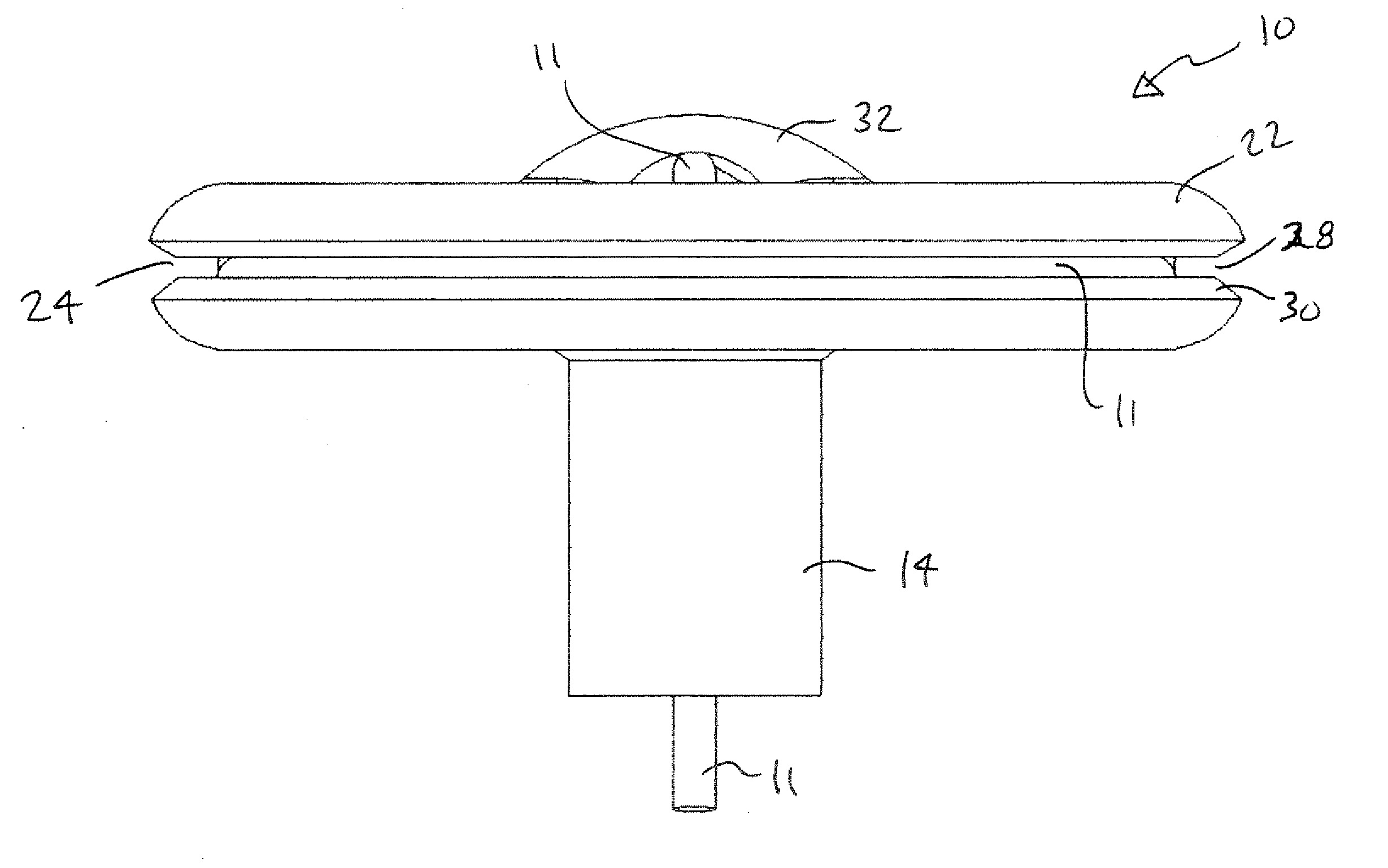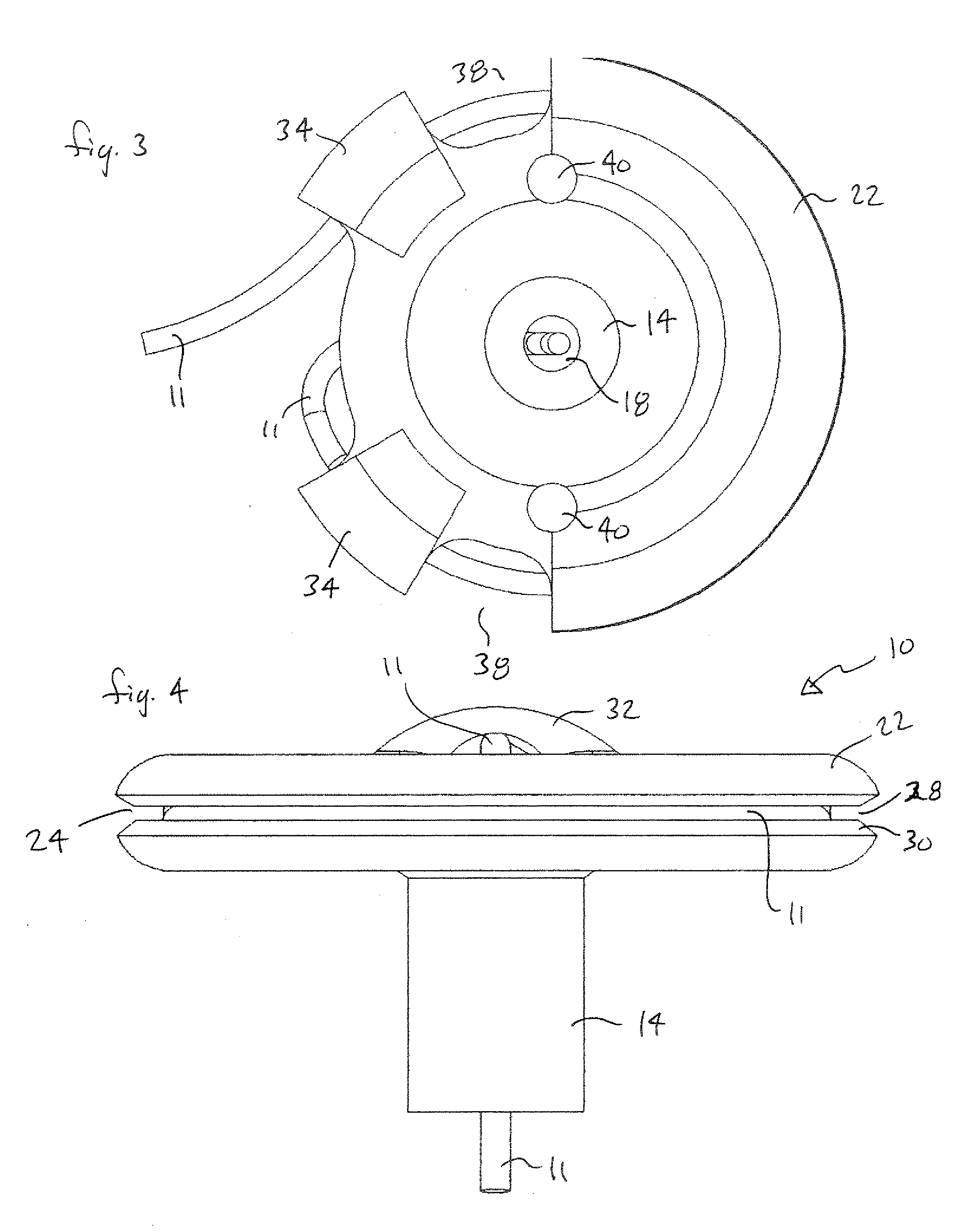Anchoring device for securing intracranial catheter or lead wire to a patient's skull
a technology of an anchoring device and a patient's skull, which is applied in the direction of catheters, infusion needles, therapy, etc., can solve the problems of catheter tip displacement, periosteum not providing as much stability, and prone to kinking and abrasion damage, so as to achieve the effect of convenient and effective securing a catheter
- Summary
- Abstract
- Description
- Claims
- Application Information
AI Technical Summary
Benefits of technology
Problems solved by technology
Method used
Image
Examples
first embodiment
[0034]Referring now to FIGS. 1 through 9, a lead anchor 10 for securing communicating lead wires and catheter conduits (herein after collectively referred to as “lead 11”) from intracranially implanted devices is shown, according to the invention. In its basic form, as is apparent in the figures, anchor 10 is similar in shape to that of a small rubber funnel and includes a generally circular rim plate 12 and an integrally formed hollow lower stem 14. As can be seen in FIGS. 4, 5, 6, 7, and 9, lower stem 14 includes a generally cylindrical outside shape and an internal flared passage 16. Flared passage 16 connects a small lower opening 18 located at the bottom of lower stem 14 to rim plate 12 so that the flared passage 16 looks similar to the cusp shape of a trumpet horn, opening to a larger diameter at the top adjacent the rim plate 12 and defining a cusp-shaped inside surface 19. Rim plate 12 defines an upper surface 21 and a lower surface 23.
[0035]Although it is preferred that rim...
second embodiment
[0057]The number, size and exact shape of loops 150 can vary to meet the exact requirements of the particular anchoring application. Of course, the angle of each loop 11 in this second embodiment shown in FIGS. 10-13 may also vary depending on the design particulars, as can the exact durometer of the material used to make either anchor.
[0058]As can be seen in FIGS. 10, 11, and 13, rim plate 102 includes cutouts 154 along the periphery 120. The purpose of cutouts 154 is to offer a less sharp path for lead 11 to make the transition from vertically exiting flared passage 106 from the patient's brain to the more horizontal orientation about the rim plate 102 and through the loops 150. The lead 11 passes gently into any of the cutouts about the periphery 120 before entering any of the loops 150.
[0059]As shown in FIG. 13, the anchor 100 of this second embodiment further includes a sealing ring 156 located on the lower surface 123 of rim plate 102. This sealing ring 156 is meant to be inte...
PUM
 Login to View More
Login to View More Abstract
Description
Claims
Application Information
 Login to View More
Login to View More - R&D
- Intellectual Property
- Life Sciences
- Materials
- Tech Scout
- Unparalleled Data Quality
- Higher Quality Content
- 60% Fewer Hallucinations
Browse by: Latest US Patents, China's latest patents, Technical Efficacy Thesaurus, Application Domain, Technology Topic, Popular Technical Reports.
© 2025 PatSnap. All rights reserved.Legal|Privacy policy|Modern Slavery Act Transparency Statement|Sitemap|About US| Contact US: help@patsnap.com



